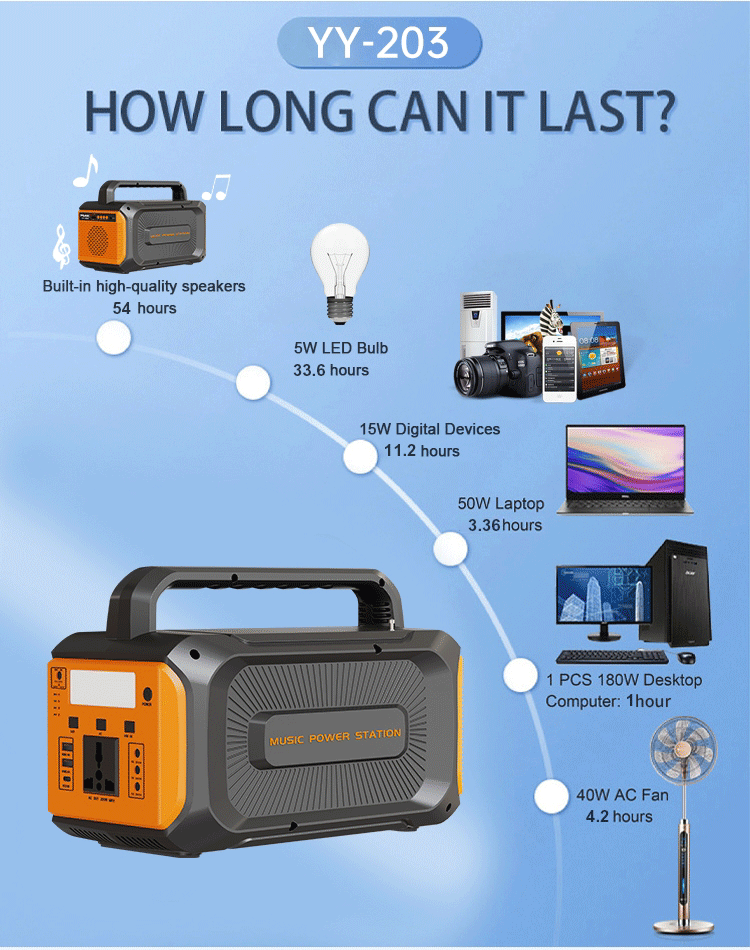Why are portable power stations more valuable than ordinary chargers?
7/28/20252 min read


1. Battery technology and cost differences
· Ordinary power banks:
Mostly use 18650 ternary lithium batteries or polymer lithium batteries, which are low in cost and high in energy density, but have a short cycle life (usually 200-500 times) and relatively low safety (higher risk of thermal runaway).
· Portable power stations:
Generally use lithium iron phosphate (LFP) batteries, which are more expensive but have obvious advantages:
· Safety: High temperature resistance, not easy to catch fire and explode, suitable for complex environments.
· Long life: Cycle charge and discharge can reach more than 2,000 times, and the long-term use cost is low.
· High current support: Can withstand higher power output, suitable for driving high-power devices.
2. Output power and compatibility
· Ordinary power banks:
The output power is usually ≤20W (USB-C PD fast charging), which can only support low-power devices such as mobile phones and tablets, and most of them only have USB interfaces.
·Portable power station:
·High power output: such as 300W AC inverter output, which can drive rice cookers, projectors, drones and other devices.
·Multi-interface design: including AC socket (220V/110V), USB-A/C, DC car charger, etc., suitable for powering multiple devices at the same time.
·Sine wave inverter technology: provides stable power to avoid equipment damage (ordinary power banks do not have this function).
3. Capacity and endurance
·Ordinary power banks:
The capacity is usually below 10,000mAh (about 37Wh), which only charges mobile phones a few times and cannot support long-term power demand.
·Portable power station:
The capacity is mostly 204.8Wh~256Wh (about 5.5 times that of 10,000mAh power banks), which can support:
·Mobile phone charging 20 times+
·Laptop working 8 hours+
·Small refrigerator running 12 hours+
·Outdoor lighting all night long.
4. Safety design and protection level
· Ordinary power bank:
Basic protection (overcharge, over discharge, short circuit), but lack of balanced charging, temperature control and other mechanisms, long-term use may cause safety hazards.
· Portable power station:
· BMS battery management system: real-time monitoring of voltage, current, temperature, providing 9-fold safety protection (such as overvoltage, overcurrent, reverse connection, balancing, etc.).
· Extreme environment adaptability: IP67 waterproof and dustproof, resistant to low temperature (-20℃) and high temperature (60℃), suitable for outdoor rain, snow, desert and other harsh conditions.
5. Material and structural complexity
· Ordinary power bank:
Simple structure, mostly plastic shell + circuit board, light weight but poor protection.
· Portable power station:
· Metal or high-strength plastic shell: anti-fall and wear-resistant, some models are equipped with anti-slip handles or handles.
· Heat dissipation design: fan + heat sink / aluminum alloy body to ensure stable operation under high load.
· Additional functions: such as LED power display, solar charging input (panel required), multi-device fast charging, etc.
6. Certification and compliance costs
· Ordinary power banks:
Only need to pass basic safety certification (such as CCC, FCC), and some cheap products do not even have certification.
· Portable power stations:
Need to pass more stringent international certification, such as:
·UN38.3 aviation certification (can be carried on board)
·IEC62368 (electronic equipment safety standard)
·CE/FCC/UL and other regional certifications to ensure global compatibility.
7. Applicable scenarios and added value
·Ordinary power banks:
Only for emergency charging, single scenario (such as travel, daily power replenishment).
·Portable power stations:
·Outdoor camping: Power electric baking trays, ambient lights, and speakers to enhance the experience.
·Home emergency: Ensure the operation of routers, monitoring, and medical equipment during power outages.
·Professional use: film and television shooting, surveying and exploration, mobile office, etc.
·Green energy: Sustainable charging with solar panels, high environmental value.
